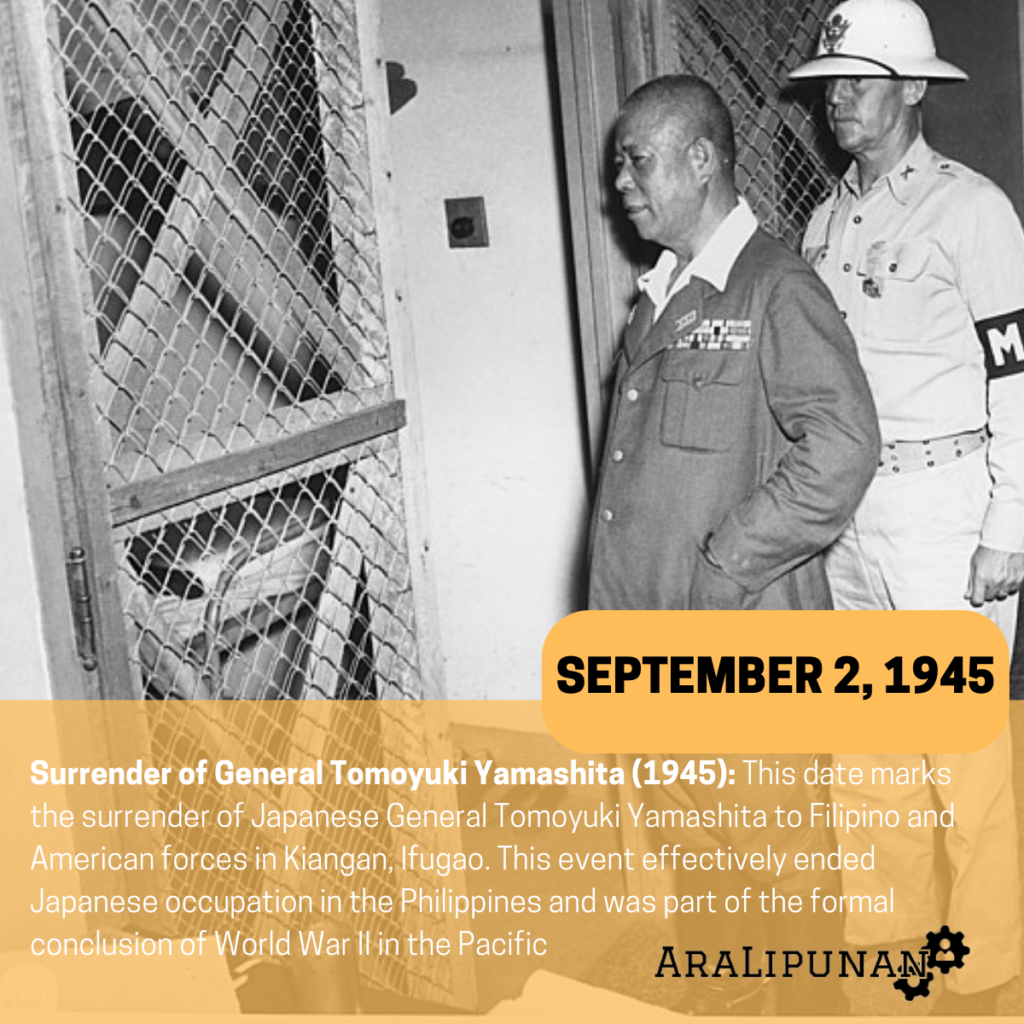Surrender of General Tomoyuki Yamashita
General Tomoyuki Yamashita’s surrender on September 2, 1945, marked a significant turning point in the Philippines’ history, effectively ending Japanese occupation and contributing to the conclusion of World War II in the Pacific.
Yamashita, known as the “Tiger of Malaya,” gained notoriety for his rapid conquest of Singapore in 1942. However, by 1945, the situation for Japan had deteriorated significantly. After suffering numerous defeats, Japanese forces were forced to retreat to the mountainous regions of northern Luzon, where Yamashita attempted to consolidate his remaining troops against the advancing Allied forces, which included both American troops and Filipino guerrillas.
The Surrender
By September 1945, Yamashita found himself surrounded and outnumbered. On September 2, he descended from his hideout in the mountains of Ifugao to surrender to American forces in Kiangan. This surrender was a result of relentless military pressure and the realization that Japan had already capitulated following the atomic bombings of Hiroshima and Nagasaki in August 1945.
The formal surrender ceremony took place the following day, September 3, in Baguio City, where Yamashita signed the surrender documents in front of American generals. This event symbolized the end of Japanese military presence in the Philippines and is commemorated as “Victory Day” in the country.
Aftermath
Following his surrender, Yamashita was tried for war crimes related to atrocities committed by Japanese troops during the occupation, including the infamous “Rape of Manila.” He was found guilty and executed in 1946. His trial set a significant precedent in international law, establishing the principle that military commanders could be held responsible for the actions of their subordinates if they failed to prevent war crimes.
The surrender of Yamashita not only marked the end of a brutal occupation but also initiated a new chapter for the Philippines, leading to its eventual independence and the reshaping of its political landscape in the post-war era.

References:
- https://www.esquiremag.ph/long-reads/features/general-tomoyuki-yamashita-philippine-war-a2212-20190904-lfrm
- https://pvao.gov.ph/story-of-battles-pvao/surrender-of-general-yamashita-at-kiangan-ifugao/
- https://www.tracesofwar.com/sights/138967/General-Yamashita-surrender-site-Kiangan.htm
- https://en.wikipedia.org/wiki/Tomoyuki_Yamashita
- https://guidetothephilippines.ph/destinations-and-attractions/general-yamashita-surrender-site
- https://www.nationalww2museum.org/war/articles/liberation-of-philippines-cecilia-gaerlan
- https://en.wikipedia.org/wiki/Timeline_of_Philippine_history









